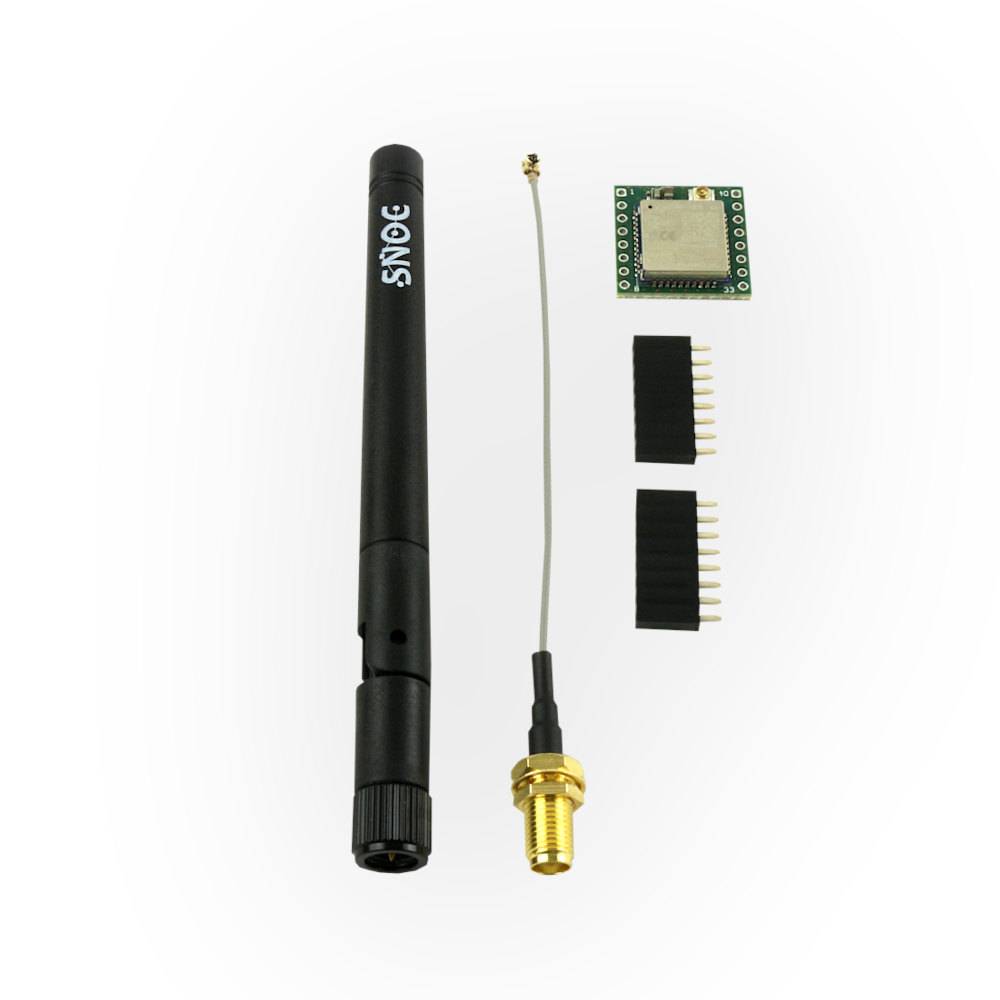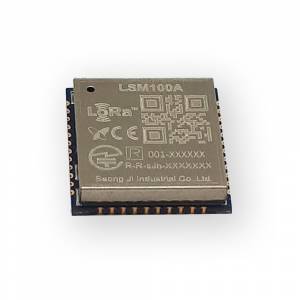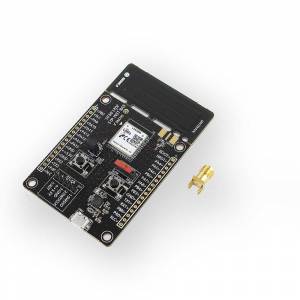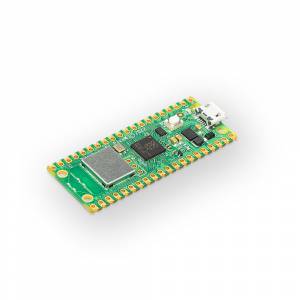Hat PICOLPWAN LoRa & Sigfox LSM100A + 868Mhz Antenna
This development board, specially adapted for integration into a Raspberry Pi Pico board, is ideal for designing your IoT prototypes.
The PICOLPWAN Kit integrates the SJI LSM100A module (EMEA Zone) for multi-network LoRA & Sigfox communication.
Kit PICOLPWAN Lora & Sigfox LSM100A + Antenne 868 Mhz




This specially designed extension for the Raspberry Pi Pico board is based on the SJI LSM100A module, offering a unique experience for exploring LPWAN networks such as LoRaWan and/or Sigfox as part of your IoT projects. The LSM100A module is a compact, low-power two-way radio device, optimized for use in the 863 MHz ~ 928 MHz ISM bands.
The HAT supports LoRa(TM) & Sigfox wireless communication protocols, offering the flexibility to switch between LoRa and Sigfox modes using simple AT commands. This development board is designed to integrate seamlessly with the Raspberry Pi Pico board, incorporating all the passive components required for smooth communication with these IoT networks.
Explore the possibilities of connectivity to the full with this dedicated expansion board, specially adapted to enrich your IoT projects while guaranteeing a unique experience of experimenting with LoRaWan and Sigfox functionalities.
Product features :
|
Dimensions
|
• 20.67 mm (L) x 21.25 mm (l) |
|
Modulation technology
|
• LoRa(TM) & Sigfox |
|
Sensitivity
|
• Up to -136dBm@LoRa(BW=125KHz, SF=12), 124dBm at Sigfox (0.6Kbps) |
|
Interface
|
• UART |
|
Commands
|
• AT |
|
Transceiver
|
• Low-power long-range transceiver operating in the sub-1 GHz ISM band |
|
Supply voltage range
|
• 1,8 to 3,6V |
|
RF interface
|
• Optimized to 50 Ω |
|
Output power level
|
• up to +15dBm |
|
Current
|
• Tx : 27mA - Rx : 5mA |
|
Chip
|
• STM32WLE5CC |
|
API Version
|
• Possibility to integrate own code |
Applications :
• Asset tracking and management: Monitor the location and condition of remote objects (containers, industrial equipment, vehicles, etc.)
• Intelligent agriculture: Monitor temperature, soil moisture and weather conditions in real time
• Water Management: Control water levels, quality and leaks in water distribution systems
• Energy Management: Observe energy consumption remotely, facilitate equipment monitoring and implement energy-saving strategies
• Smart City Equipment: Air quality, waste management, intelligent parking spaces
• Peripheral Security: Create wireless security devices, such as motion sensors, alarm systems or tracking devices
• Environmental Sensors: Control air quality, noise pollution levels or other environmental parameters in specific areas
These examples illustrate the versatility of the expansion board, paving the way for a variety of IoT applications in different sectors.
Kit contents :
• 1 x PICOLPWAN Board
• 2 x Connectors (2x8 pins) to be soldered
• 1x Articulated 1/2 wave 868Mhz antenna
• 1x UFL <> RP-SMA 100mm cable
RF Characteristics LoRa(TM) :
Frequency Range (1) : 863MHz - 928MHz
• EU863-870
• AS923
• KR920-923
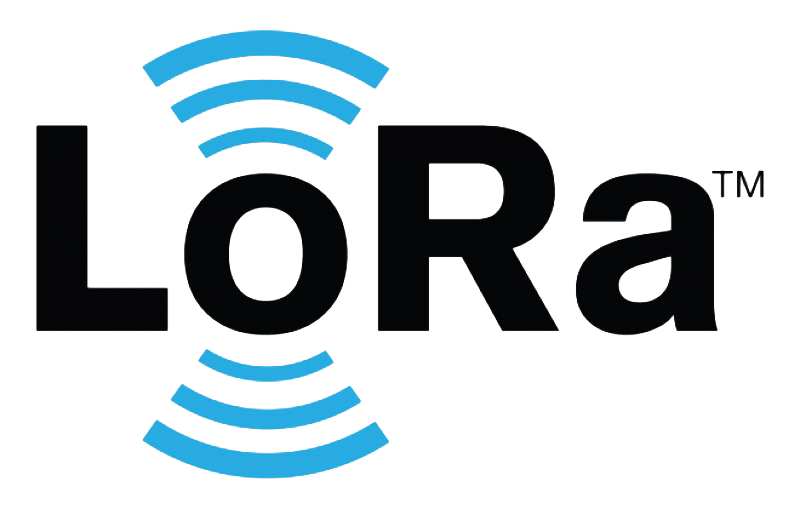

RF Characteristics Sigfox :
Frequency Range (1) : 863MHz - 928MHz
• RC1 868.13±0.096
• RC3 923.20±0.096
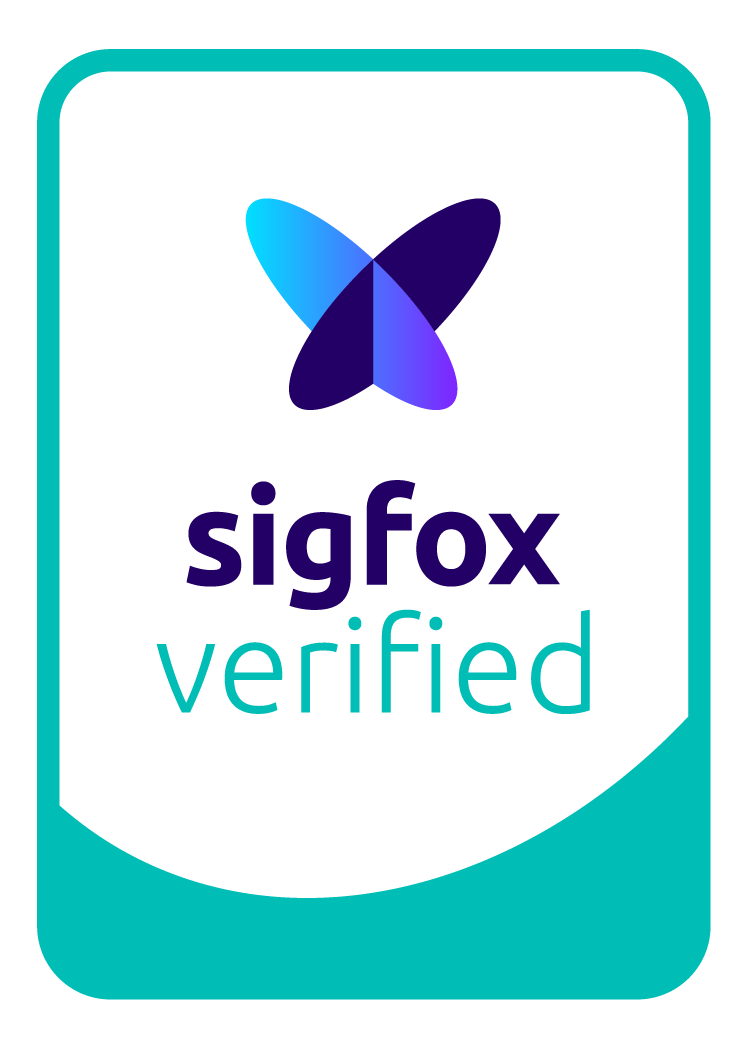

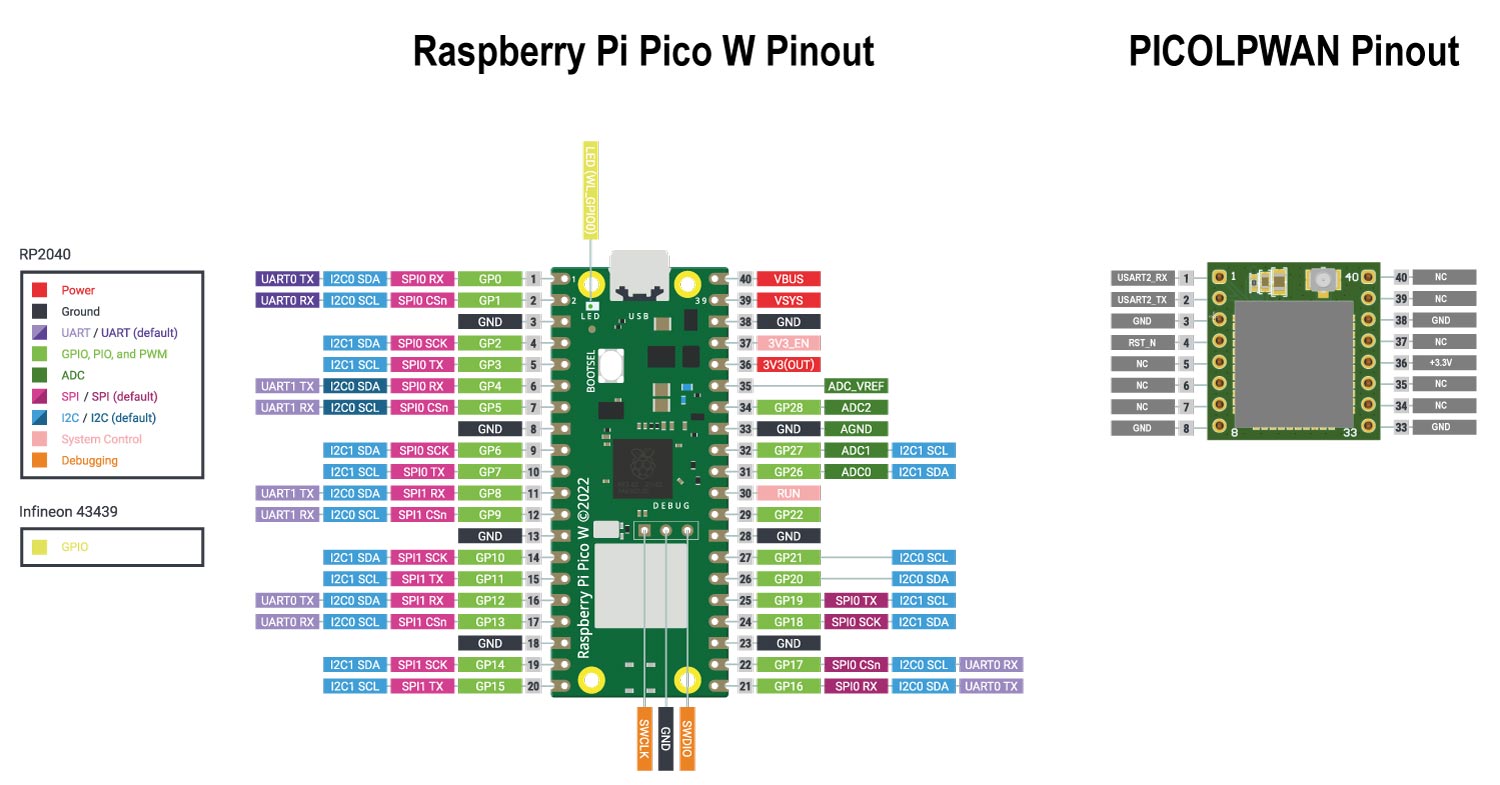

|
GPIO d'une carte Raspberry Pi Pico
|
GPIO d'une carte PICOLPWAN
|
|
Pin 1( UART0 TX)
|
Pin 1 (USART2_RX)
|
|
Pin 2 (UART0 RX)
|
Pin 2 (USART2_TX)
|
|
Pin 3 (Ground)
|
Pin 3 (Ground)
|
|
Pin 4 (GPIO 2)
|
Pin 4 (RST_N)
|
|
Pin 5 (GPIO 3)
|
Pin 5 (Non Connected)
|
|
Pin 6 (GPIO 4)
|
Pin 6 (Non Connected)
|
|
Pin 7 (GPIO 5)
|
Pin 7 (Non Connected)
|
|
Pin 8 (Ground)
|
Pin 8 (Ground)
|
|
Pin 33 (Ground)
|
Pin 33(Ground)
|
|
Pin 34 (GPIO 28)
|
Pin 34(Non Connected)
|
|
Pin 35 (ADC_Vref)
|
Pin 35(Non Connected)
|
|
Pin 36 (+3.3V(Out))
|
Pin 36 (+3.3V Power)
|
|
Pin 37 (+3.3V_EN)
|
Pin 37(Non Connected)
|
|
Pin 38 (Ground)
|
Pin 38(Ground)
|
|
Pin 39 (VSYS)
|
Pin 39 (Non Connected)
|
|
Pin 40 (VBUS)
|
Pin 40 (Non Connected)
|
Communication commands :
The module is managed using AT serial commands transmitted via the TX/RX pins. See communication specifications and AT commands below.
• Serial communication: 9600 baud, 8 bits, 1 stop bit, no parity.
Some examples of AT commands :
| Communitation Test | AT |
| Get LoRa Key | AT+APPEUI=? AT+NWKKEY=? AT+APPKEY=? AT+NWKSKEY=? AT+APPSKEY=? AT+DEUI=? AT+NWKID=? |
| Send LoRa message | AT+SEND=port:ack:data <Port >:[ 1 ~ 199 ] <Ack >:[ 0: unconfirmed, 1: confirmed] |
| Get ID sigfox from the module | AT$ID |
| Get code PAC sigfox from the module | AT$PAC |
| Send Sigfox message | AT$SF=payload,opt_responsewaited,opt_txflag <payload>: [ 12 bytes maximum in ASCII format (24 ASCII characters max) ] <opt_responsewaited>: [ 0: no response waited (default) ] [ 1: response waited ] <opt_txflag txflag>: [ 0: one Tx frame sent ] [ 1: three Tx frames sent (default) ] |
| Change mode Lora <-> Sigfox | AT+MODE=mode <mode>:[ 0: SigFox, 1: LoRa |
| See all available AT commands | AT? |
Additional information :
• Find the list of AT commands available in the "User Guide" downloadable from the "Documentation" tab
• Find all the resources you need to start your project on the LSM100A module github
• Please consult this article for a detailed test of this product
| SKU | PB0004750 |
|---|---|
| Country of Manufacture | France |
| Manufacturer | SNOC |

 Yadom Francais
Yadom Francais